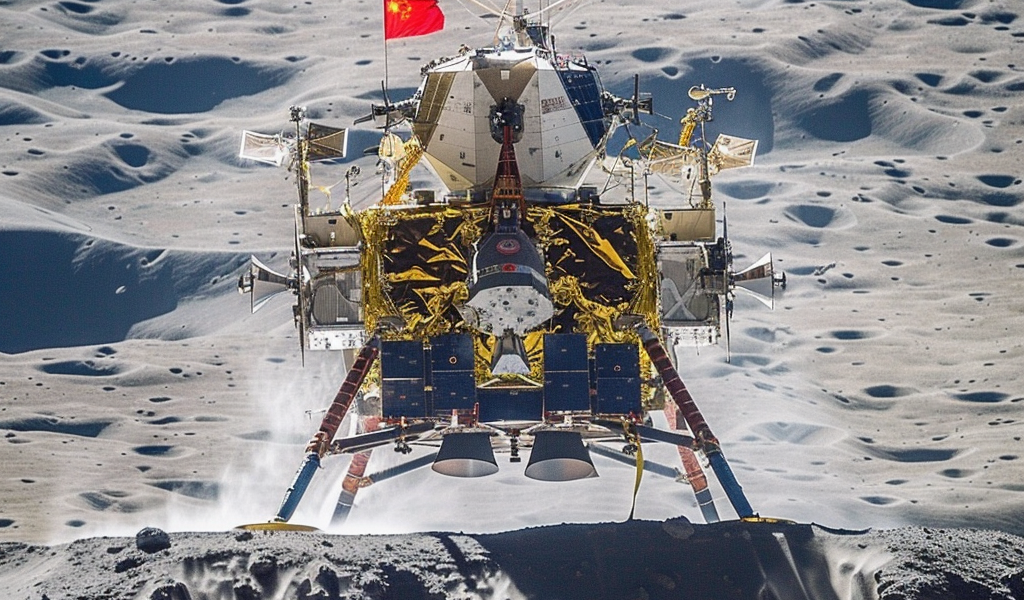A Chinese space probe, Chang’e-6, has made a historic return to Earth after completing a successful mission to collect samples from the far side of the moon. The spacecraft landed in China’s Inner Mongolia region, marking a significant achievement for China as the first country to bring back samples from the hemisphere of the moon that perpetually faces away from Earth.
The China National Space Administration (CNSA) confirmed the mission’s success, stating that the Chang’e-6 probe is operating normally. The spacecraft utilized a robotic arm and drill to gather 2kg (4.4lb) of lunar samples over several days. Additionally, it captured images of the lunar surface and planted a Chinese flag, showcasing China’s technological prowess in space exploration.
Prior to its return, the spacecraft was guided by a relay satellite, ultimately touching down in China at 2:06 pm Beijing time. The collected lunar soil and rocks are anticipated to offer valuable insights to scientists worldwide, shedding light on the solar system’s formation and the distinctions between the moon’s far side and its Earth-facing side.
This successful mission comes after China’s previous achievement with the Chang’e-5 mission in 2020, which brought back samples from the moon’s near side. China’s advancements in space exploration underscore its ambition to bolster its space capabilities and compete with established players like the United States and Russia. Beijing’s goal of sending astronauts to the moon further illustrates its commitment to expanding its presence in space.
China’s relentless efforts in space exploration have positioned it as a key player in the global space race. With groundbreaking missions like Chang’e-6, China continues to push boundaries and contribute to the scientific understanding of celestial bodies beyond Earth.





